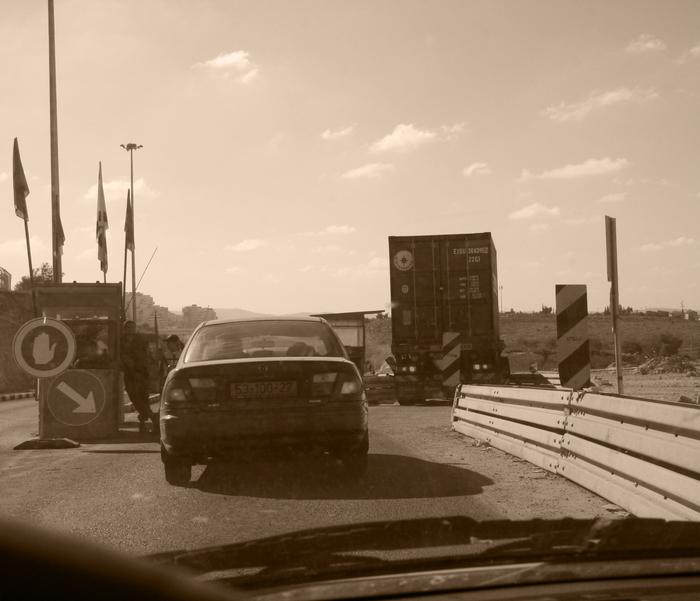Rebecca David ProposalA Separate PlaceOn my way to university, I travel through the scenic hills of Judea and Samaria. I know the hills well, from a distance; a familiar place, from afar. It is only at the checkpoint on Road 446 that the far comes close. It is only here that the 'other' has a face. It is at this junction that the potential for the sacred becomes apparent. I commute daily from my security-fenced-in community on a hilltop in Samaria to the magnificent hundred-year-old stone building of the Architecture Faculty of the prestigious Bezalel Academy of Art and Design in the center of Jerusalem. In contrast to the 25 minutes of speedy, radio-accompanied travel, bubble-boxed in the security of one's vehicle, once we have slowed down to join the line of cars waiting to pass the checkpoint, a quiet descends upon the car. A quiet of thoughts. A quiet of a few slow minutes of actually being a part of the scenery, a sense of the place, missed in the rush of commuting. The urge to roll down the window to properly hear, feel and taste the place often overcomes me. This place is a checkpoint along the 446, located between the Arab village of Na’alin and the Israeli city of Modi’in Ilit. The checkpoint monitors, via the army, who may enter Israel from the army governed territory of Judea and Samaria (the West Bank of the Jordan River). A sacred place is what people make of it. It is a place separated. This site has the potential to be an ugly place or a place of beauty. An exchange of smiles or a nod of the head between Peoples, can sanctify this checkpoint and turn it into a place separated from the daily grind, but sanctified with recognition and then something. While the muted violence of a finger or the abrupt shout of an expletive transforms the place entirely. It can be a place of tense exiting and entering from one territory to another, void of human association. Or it can be a place of calm passage, where the human connection overcomes the political turmoil. This for me is a sacred place. Further along the route to Jerusalem there is a natural water spring, by the side of the highway, where Arabs and Israelis alike, stop to drink, fill up their plastic bottles, clean their hands and use it as a place to pause along their journey. Respectfully, without friction each waits his turn for the precious stuff. In this sacred land, the architectural intervention should be of water. Water is used for religious rituals in both the Jewish and Moslem communities. Water being the precious commodity it is in the Middle East, is a common source of angst and value for both Peoples. I propose an architectural monument of both practical and symbolic utility at this point of passage, this checkpoint. However, to change a lifeless monument into a sacred place needs Peoples. And that is the point. The sacred is that which we choose to make sacred. Additional Help and InformationAre you in need of assistance? Please email info@berkeleyprize.org. |
|

